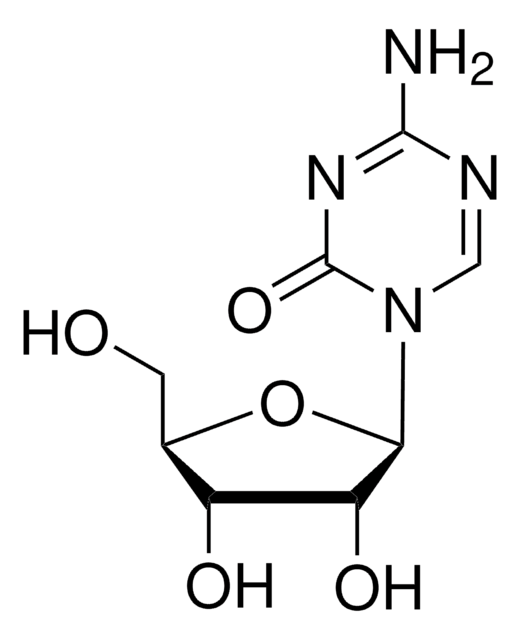Kluczowe dokumenty
P3029
Phencyclidine hydrochloride
Synonim(y):
1-(1-Phenylcyclohexyl)piperidine hydrochloride, PCP hydrochloride
About This Item
Polecane produkty
Postać
powder
Poziom jakości
kontrola substancji
USDEA Schedule II; Home Office Schedule 2; stupéfiant (France); kontrollierte Droge in Deutschland; regulated under CDSA - not available from Sigma-Aldrich Canada; psicótropo (Spain); Decreto Lei 15/93: Tabela IIA (Portugal)
rozpuszczalność
H2O: 11.2 mg/mL
0.1 M HCl: 18.4 mg/mL
methanol: 30 mg/mL
ciąg SMILES
Cl.C1CCN(CC1)C2(CCCCC2)c3ccccc3
InChI
1S/C17H25N.ClH/c1-4-10-16(11-5-1)17(12-6-2-7-13-17)18-14-8-3-9-15-18;/h1,4-5,10-11H,2-3,6-9,12-15H2;1H
Klucz InChI
BUAJNGPDPGKBGV-UHFFFAOYSA-N
Szukasz podobnych produktów? Odwiedź Przewodnik dotyczący porównywania produktów
Działania biochem./fizjol.
Cechy i korzyści
Hasło ostrzegawcze
Danger
Zwroty wskazujące rodzaj zagrożenia
Zwroty wskazujące środki ostrożności
Klasyfikacja zagrożeń
Acute Tox. 3 Oral - STOT SE 3
Organy docelowe
Central nervous system
Kod klasy składowania
6.1C - Combustible acute toxic Cat.3 / toxic compounds or compounds which causing chronic effects
Klasa zagrożenia wodnego (WGK)
WGK 3
Temperatura zapłonu (°F)
Not applicable
Temperatura zapłonu (°C)
Not applicable
Środki ochrony indywidualnej
Eyeshields, Faceshields, Gloves, type P2 (EN 143) respirator cartridges
Certyfikaty analizy (CoA)
Poszukaj Certyfikaty analizy (CoA), wpisując numer partii/serii produktów. Numery serii i partii można znaleźć na etykiecie produktu po słowach „seria” lub „partia”.
Masz już ten produkt?
Dokumenty związane z niedawno zakupionymi produktami zostały zamieszczone w Bibliotece dokumentów.
Nasz zespół naukowców ma doświadczenie we wszystkich obszarach badań, w tym w naukach przyrodniczych, materiałoznawstwie, syntezie chemicznej, chromatografii, analityce i wielu innych dziedzinach.
Skontaktuj się z zespołem ds. pomocy technicznej
